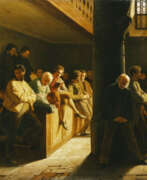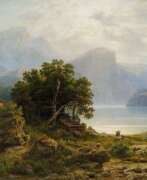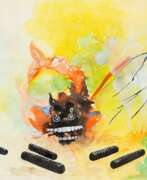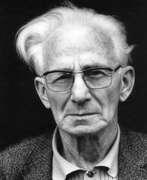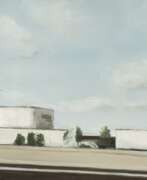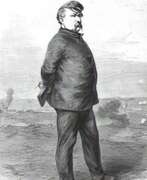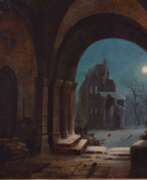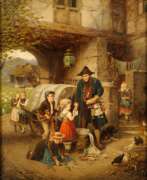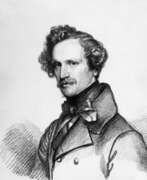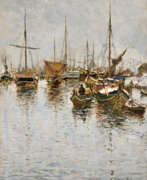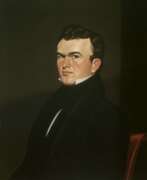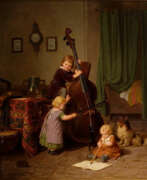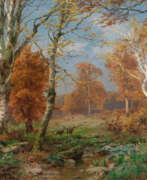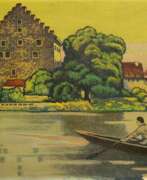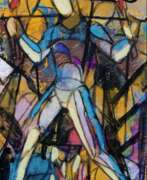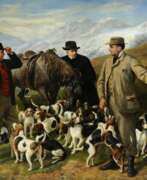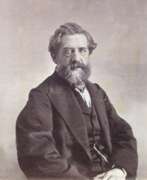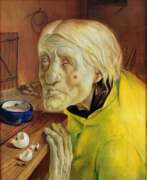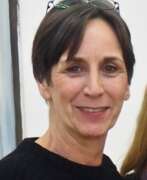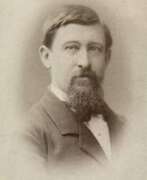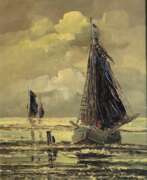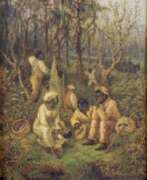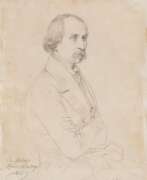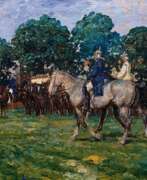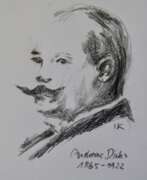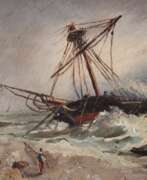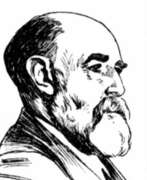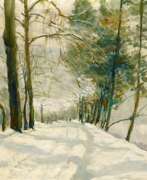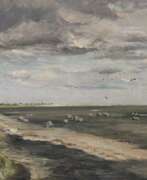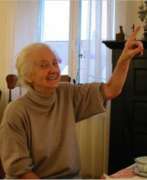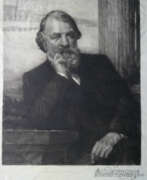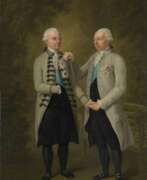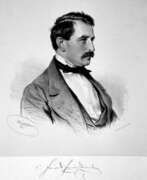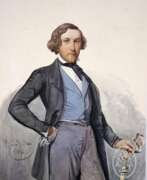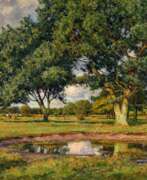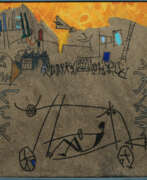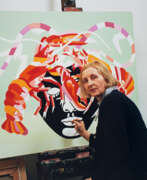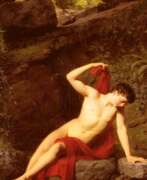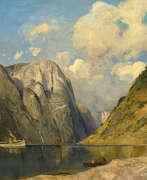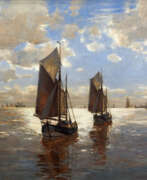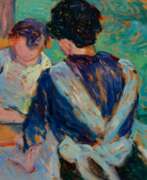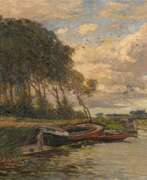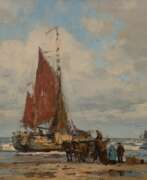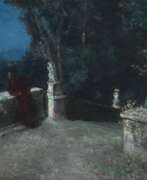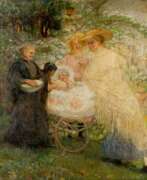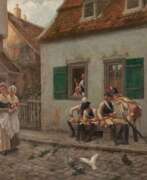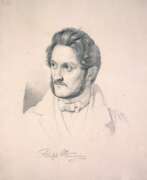Painters Düsseldorf school of painting
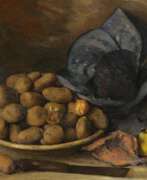

Wilhelm Schmurr was a German painter and co-founder of the Sonderbund in Düsseldorf. His style, characterized by clear expression, was influenced by the Pre-Raphaelites, Symbolists, and Realists. He received several awards and medals for his work and was a member of various art associations. Schmurr taught at the Kunstakademie Düsseldorf and inspired by the farmers after the war, he created scenes of simple life and still lifes. He was awarded the Karl-Ernst-Osthaus-Preis and the Bundesverdienstkreuz erster Klasse and became an honorary member of various artist associations.
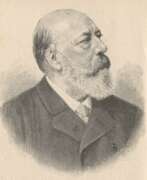

Andreas Achenbach was a German landscape and seascape painter in the Romantic style. He is considered to be one of the founders of the Düsseldorf School.[citation needed] His brother, Oswald, was also a well known landscape painter. Together, based on their initials, they were known as the "Alpha and Omega" of landscape painters.
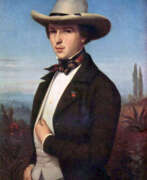

Oswald Achenbach was a German painter associated with the Düsseldorf school of painting. Though little known today, during his lifetime he was counted among the most important landscape painters of Europe. Through his teaching activities, he influenced the Kunstakademie Düsseldorf. His brother, Andreas Achenbach, who was twelve years older, was also among the most important German landscape painters of the 19th century. The two brothers were humorously called "the A and O of Landscapes" (a reference to their initials matching a common German reference to the Alpha and Omega).
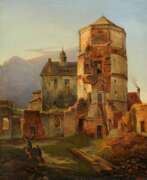

Carl Adloff was a German landscape painter. He is known for his urban scenes, architectural compositions and winter views.
Carl Adloff studied painting at the Düsseldorf Academy of Fine Arts from 1833 to 1843, where he attended the landscape class of Johann Wilhelm Schirmer and the architecture class of Rudolf Wigman. His choice of motifs favoured the Dutch landscape, based on seventeenth-century Netherlandish painting. He often painted seascapes enveloped in a romantic mood of tranquillity in moonlight, morning and evening light.
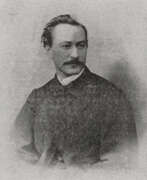

Albert Arnz was a German landscape painter of the Düsseldorf school. He studied painting from 1854 to 1860 at the Dusseldorf Academy of Art, where his two teachers were Andreas and Oswald Achenbach. Arntz painted atmospheric landscapes in Germany, Italy and Switzerland.
Albert Arntz was a member of the Malkasten Art Society and participated in their "living paintings" from 1875 onwards.
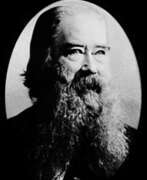

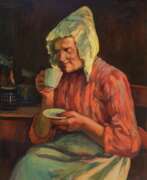

Gottfried Albert Maria Bachem was a German painter and illustrator of the Düsseldorf School. Bachem, who belonged to the Malkasten artists' association from 1921 to 1932, painted portraits, genre scenes and landscapes, and he also illustrated children's books. From 1900 he took part in numerous art exhibitions, including in Berlin.
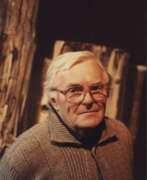

Gerd Baukhage is a German abstractionist painter.
He studied at the Dusseldorf Academy of Art and painted realistic landscapes. Participation in World War II and Soviet captivity strongly influenced the artist's outlook and he moved on to abstract expressive works.
Human suffering and misery in the form of "blockages" and "obstacles" were the theme of Bauckhage's work in the later years of his life. One of his famous creations on the theme of violence and mass murder is the series Execution Machines.


William Holbrook Beard was an American artistic painter who is known best for his satirical paintings of beasts performing human-like activities.
Beard was a prolific artist. His humorous treatment of bears, cats, dogs, horses and monkeys, generally with some human occupation and expression, usually satirical, gave him a great vogue at one time, and his pictures were much reproduced.


Ciro Beltrán is a Chilean artist living and working in Berlin and Santiago.
He is a multifaceted artist, recognizable in Latin America, who seeks to reclaim public spaces, constantly pushing the boundaries of art.
Beltran graduated from the University of Chile as a visual artist and then studied at the graduate school of the Kunstakademie in Düsseldorf, Germany. He works in the style of abstract expressionism, creates paintings and installations, and participates in numerous exhibitions.


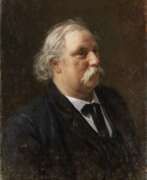

Knud Larsen Bergslien, a Norwegian painter and art teacher, is renowned for his historical paintings, notably "Skiing Birchlegs Crossing the Mountain with the Royal Child." This iconic artwork depicts Birkebeiner skiers rescuing Prince Haakon in 1206, a pivotal moment in Norwegian history.
Bergslien was part of the Düsseldorf school of painting and closely associated with artists Hans Fredrik Gude and Adolph Tidemand. His talent earned him the Order of Vasa from King Oscar II for his painting "The Crowning of King Oscar II in the Nidaros Cathedral." His significant contributions to Norwegian art are showcased in the National Gallery of Norway.
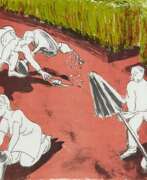

Thomas Bernstein is a German visual artist and art teacher. From 1978 to 1985 he studied at the Düsseldorf Art Academy. In addition to figurative works on paper, the sculptor, draftsman and performer also creates anthropomorphic sculptures from various materials, primarily silicone. The dominant theme in his performances is movement, the everyday and the absurd. While his pictorial works relate to questions of human communication, he shows abstract body-related forms in his sculptures. These can be found in his figurative drawings in a more naturalistic way.
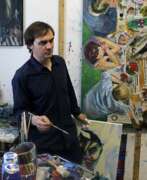

Alexander Besel is a German painter who was born in Kyrgyzstan (USSR).
He studied at the Dusseldorf Academy of Arts and is committed to figurative painting in his work. Alexander Bezel's art confronts the viewer directly and confrontationally, but at the same time playfully and ironically. Through various forms, he approaches his central theme: man, his existence. In addition to depictions of existentialist situations and questions of identity, those that reflect people in their everyday lives are particularly predominant.
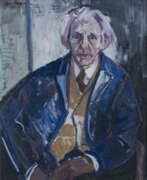

Tom Beyer is a German artist.
Beyer studied at the Düsseldorf School of Applied Arts, traveled throughout Europe, in 1931 opened a studio in Berlin and joined the Communist Party. Although the National Socialists who came to power in Germany in 1937 forbade him to exhibit, from 1939 to 1945 Beyer took part in World War II as a Wehrmacht soldier.
After the war, Beyer led an active social and artistic life. He was also a member of the Association of Visual Artists of the GDR and became its chairman in 1950. As a member of the SED, Beyer reflected in his works the socialist construction in his country, depicting nature and people. He created a large mural for the Löwenschen Saal hall in the Stralsund town hall. From 1972 he taught part-time at the Berlin-Weißensee School of Art.


Albert Bierstadt, a German-American painter, became renowned for his expansive and romanticized landscapes of the American West. Born in Solingen, Germany, in 1830, Bierstadt moved to New Bedford, Massachusetts, at the age of two with his family. Largely self-taught, he initially worked as a drawing teacher before traveling to Europe to hone his skills. Bierstadt's European studies, particularly in Düsseldorf, greatly influenced his artistic style, equipping him with the techniques that he would later apply to his majestic depictions of the American wilderness.
Bierstadt's first major expedition to the West in 1859 marked the beginning of his lifelong fascination with the region. His works from this period, such as "The Rocky Mountains, Lander's Peak" (1863), captured the public imagination and established him as a leading figure in the Hudson River School. These paintings were celebrated for their detailed and idealized portrayal of the rugged landscapes and played a role in shaping the perception of the American West during a time of rapid territorial expansion and exploration.
Despite his success, Bierstadt's style fell out of favor towards the end of his career as tastes shifted towards realism and Impressionism. His later works, including "The Last of the Buffalo" (1888), were criticized for their perceived theatricality and excessive romanticism. Bierstadt's popularity waned, and he faced financial difficulties, but his legacy experienced a resurgence in the mid-20th century as interest in his technique and contributions to American art history grew.
For collectors and enthusiasts of American landscape painting, Bierstadt’s works offer a vivid, albeit embellished, glimpse into the 19th-century frontier spirit. His paintings are housed in major institutions like the Metropolitan Museum of Art and the National Gallery of Art, serving as testaments to his skill and vision.
To stay updated on exhibitions and sales related to Albert Bierstadt's works, consider signing up for alerts tailored to his artistic contributions. This subscription will keep you informed about new discoveries and auction events specifically linked to Bierstadt's enduring legacy.
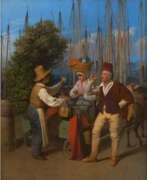

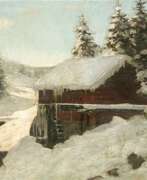

Friedrich (Fritz) Bindewald was a German painter associated with the Düsseldorf School of Art and a member of the German Reichstag.
Friedrich Bindewald studied history painting, anatomy and perspective with Johann Peter Theodor Janssen, Eduard Gebhardt, Hugo Krol and Julius Retting. From 1889 he worked independently on figurative compositions and landscapes with forest motifs from Schwalm, Vogelsberg, Rhen and the Bavarian Alps.
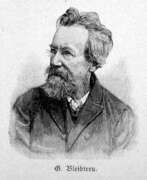

Georg Bleibtreu was a German painter of the second half of the 19th century. He is known as a historical painter, famous for his battle paintings.
Georg Bleibtreu is considered a representative of the Dusseldorf school of art. Critics have noted his realistic conscientiousness and meticulous attention to detail in his paintings.
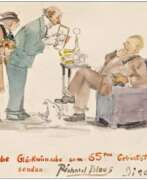

Richard Bloos was born in Brühl in 1878 and attended the Art Academy in Düsseldorf, where he studied under Peter Janssen, Willy Sparrow and Forberg. After a stay in Paris from 1906 to 1914, Bloos lived until his death in Düsseldorf in 1957. He participated in the exhibitions of the Münchner Sezession and the salon of the Société National des Beaux-Arts in Paris. The artist’s preferred motifs are lively figure scenes.


Ludwig Blume-Siebert was a German genre painter and illustrator. He studied painting at the Dusseldorf Academy of Fine Arts and the Munich Academy of Fine Arts.
Ludwig Blume-Siebert mainly depicted idyllic and folk scenes of village life, often with children.
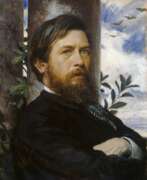

Arnold Böcklin was a Swiss symbolist painter.
Influenced by Romanticism, Böcklin's symbolist use of imagery derived from mythology and legend often overlapped with the aesthetic of the Pre-Raphaelites. Many of his paintings are imaginative interpretations of the classical world, or portray mythological subjects in settings involving classical architecture, often allegorically exploring death and mortality in the context of a strange, fantasy world.


Friedrich Boser, full name Karl Friedrich Adolf Boser was a German genre painter and portrait painter of the Düsseldorf school.
Friedrich Boser first studied painting at the art academies in Dresden and Berlin, from 1837 he attended the 2nd class of historical painting at the Düsseldorf Academy of Arts. From 1841 to 1843 he studied genre and portrait painting there, which he has been mainly engaged in ever since.
Friedrich Boser paid great attention to the subtlety of painting and the detailed study of objects. He also tried his hand at literary subjects.
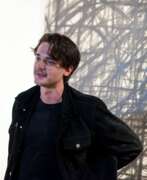

Peppi Bottrop is a German graphic artist who lives and works in Sicily.
He graduated from the Dusseldorf Academy of Arts and has participated in many exhibitions.
Bottrop is a color-blind painter who uses graphite on canvas which he paints directly on the wall. His monochrome paintings depict rectangles, circles and triangles - they are expressive, their skeleton-like abstract outlines reminiscent of a kind of music.
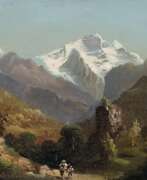

Wilhelm Brandenburg was a German landscape painter of the Düsseldorf School of painting.
Wilhelm Brandenburg created a large number of romantic views of the Rhine and Moselle landscapes. He also travelled to the Tyrol, Upper Bavaria and Switzerland.
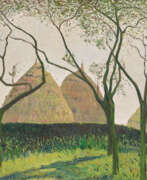

Julius Bretz was a German painter of the late nineteenth and first half of the twentieth centuries. He is known as a painter and graphic artist, a painter of landscapes and floral still lifes, a representative of the Düsseldorf and Hague Schools.
Julius Bretz was one of the four founders of the Düsseldorf art association Sonderbund and a founder of the Rhine Secession. He was also a member of the artist association "Malkasten" and a member of the Cologne and Bonn artist associations.
Bretz's paintings can be seen today in art museums in Bonn, Düsseldorf, Cologne, Wuppertal, Zurich and other cities


Paul Bücher was a German painter and stained glass artist.
He studied at the Düsseldorf School of Applied Art, then at the Düsseldorf Academy of Art, and was a member of the Malkasten Artists' Association.
Paul Bücher, as a painter of glass, created stained glass with figurative images, wall paintings and panels. Later he became involved in landscape painting, particularly of the Lower Rhine.
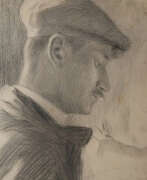

Georg Burmester was a German artist of the late 19th - first third of the 20th centuries. He is known as a painter, graphic artist, impressionist, representative of the Düsseldorf art school, and teacher.
Burmester worked mainly in the genres of landscape and marinas, but among his works there are also still lifes, as well as works in the genre of nude. He was a teacher at the Kassel Art School from 1912 to 1930 and was promoted to the rank of professor in 1917.
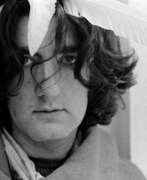

Michael Buthe was a German artist who lived and worked between Germany and Morocco. He exhibited widely throughout Europe during his life and is known for his eclectic and prolific oeuvre which encompasses painting, sculpture, and installation.
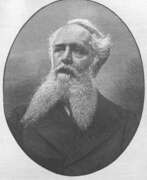

Wilhelm Camphausen was a mid-nineteenth-century German painter specializing in historical and battle scenes. He was a representative of the Dusseldorf school of painting and in 1859 became professor of painting at the Dusseldorf Academy of Fine Arts.
Camphausen accompanied Prussian troops during the Schleswig-Holstein military campaign in 1864 and produced several paintings with battle scenes that made him a well-known representative of patriotic historical art in Germany. Camphausen also painted many portraits of German princes, famous soldiers, and statesmen. During the Franco-Prussian War in 1870 he served as an official war painter in the German army.
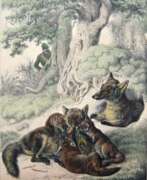

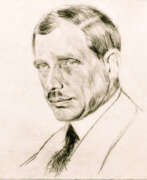

Max Clarenbach was a German painter of the first half of the twentieth century. He is known as a painter, landscape painter, genre painter and teacher and is considered one of the most important representatives of Rhenish painting of his time.
Max Clarenbach made study trips to Italy and Holland early in his career, where he formed his genre preferences and became a landscape painter. His work reflected the influence of the Hague School and the French Barbizonians. The artist skillfully depicted winter scenes and the nature of western Germany. He also painted sports and street scenes.
Clarenbach was one of the organizers of the Düsseldorf Sonderbund and taught at the Düsseldorf Academy of Art.
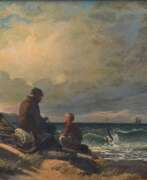

Johann Wilhelm Cordes was a German landscape painter.
Johann Wilhelm Cordes entered the Academy of Fine Arts in Prague, then moved to the Academy of Fine Arts in Düsseldorf in 1842, where he studied with Karl Friedrich Lessing and Johann Wilhelm Schirmer.
He specialised in realistic landscapes painted during his travels. He also created coastal scenes with staffage.
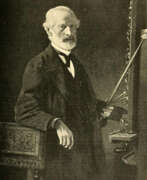

Hugo Crola was a German painter, son of the landscape artists Elise and Georg Heinrich Crola.
Hugo Crola studied at the Düsseldorf Academy of Art and later became a professor. He created images of many aristocratic and wealthy public figures, but is best known for his portraits of fellow artists.


Eduard Adolf Daelen is a German artist, writer, and journalist.
He studied at the Düsseldorf Academy of Art and the Munich Academy of Fine Arts. Daelen was a member of the Malkasten Society of Artists (Malkasten) and was chairman of the local association Allgemeine Deutsche Kunstgenossenschaft. During World War I he took up drawing patriotic posters and war postcards.
Daelen also became known for the first biography of Wilhelm Busch, which he wrote in 1886. He also wrote art history articles that were published under pseudonyms in various newspapers.


Hans Dahl was a celebrated Norwegian painter. He is best known for his vivid and romantic depictions of Norwegian fjords and the vibrant life around them, capturing the essence of rural western Norway during the late 19th and early 20th centuries. Hans Dahl's art is characterized by its romantic realism, often showcasing young women in traditional costumes against the backdrop of Norway's breathtaking landscapes.
Hans Dahl's technique and color palette were exceptional, employing rubies, aquamarines, sapphires, pearls, and jade to bring to life the red vests of bunads, the blue waters and skies, ivory clouds, and the myriad shades of green in the grassy meadows. His works such as "Arriving for a Celebration" are particularly notable for depicting a lively scene with numerous figures in a composition, a rare approach for Dahl who typically focused on individual or small groups of young women.
His son, Hans Andreas Dahl, also followed in his footsteps but tragically died at a young age. Hans Dahl was honored as a knight of the Royal Norwegian Order of St. Olav, 1st class, in 1902, recognizing his contributions to Norwegian art and culture.
Dahl's paintings, such as "Summerday by Balestrand," "A Young Woman in the Meadow," and "Milkmaid with goats," among others, offer a romantic, nostalgic window into Norwegian culture and landscape, resonating with both Norwegians and international audiences alike. His works have been celebrated for their detailed depictions of village life, the natural beauty of the Norwegian fjords, and the traditional Norwegian way of life, making him a favorite among collectors and enthusiasts of Norwegian art.
For collectors and experts in art and antiques interested in the unique blend of romanticism and realism that defines Hans Dahl's work, staying informed about new sales and auction events is essential. Signing up for updates can provide exclusive access to the latest offerings related to Dahl's paintings, ensuring enthusiasts are always in the know about opportunities to add to their collections.
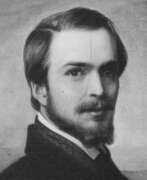

Johannes Christian Deiker is a German painter. He is mainly known for his hunting motifs. His father Christian Friedrich Deiker was a portrait painter and his younger brother Carl Friedrich an animalist.
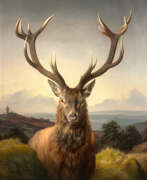

Carl Friedrich Deiker was a German animal painter.
He depicted with particular interest the wild animals of Germany - deer and wild boar; battles between male deer, broods of wild piglets escaping from hunters. Some of his canvases are devoted to birds of prey - falcons, hawks as well as grouse, grouse; the life of foxes, hares and other animals and birds. The painter also illustrated animal scenes in art magazines and hunting literature.


Eugen Gustav Dücker was a Baltic German painter, in the Romantic style, associated with the Düsseldorfer Malerschule.
Despite his career's roots in Germany, he spent much of his time in Estonia, where he painted idyllic landscapes of the sea and the countryside. He also made numerous trips to Holland, Belgium, France and Italy.
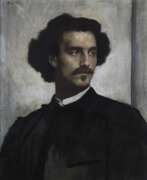

Anselm Feuerbach was a famous 19th-century German painter, an outstanding master of the historical genre.
Anselm Feuerbach was also a skilful portrait painter, the majority of his paintings are in the style of Neoclassicism. His finest masterpieces are nowadays kept in museums in Germany, and his biography is closely linked to Italy, where the artist lived for a considerable part of his life.
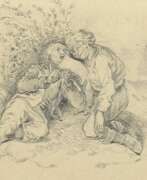

Otto Clemens Fikentscher the Elder was a German painter, draughtsman and illustrator of the Düsseldorf School. Although it is unclear whether he is related to the artist Otto Fikentscher, who was married to Jenny Fikentscher, Otto Fikentscher (the Elder) studied at the Düsseldorf Art Academy and specialised in historical painting and the depiction of horses in battle scenes. He was a member of the artists' association Malkasten and served as a war correspondent during conflicts such as the German-Danish War and the Franco-Prussian War. Fikentscher's works were reproduced in popular magazines and showed his lively and dynamic style.
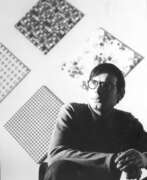

Konrad Fischer (pseudonym: Konrad Lueg) was a German painter and gallery owner.
Lueg created so-called "Pattern Paintings" in deliberately chosen proximity to wallpapers. He cooperated closely with Sigmar Polke and Gerhard Richter. Ironising Socialist Realism, which was largely prescribed as the official art movement in the socialist countries of the Eastern Bloc, they created Capitalist Realism, with which they critically examined the consumerist orientation of the West, as in the demonstration Leben mit Pop (Life with Pop), realised together with Richter on 11 October 1963 — a demonstration for Capitalist Realism in the Düsseldorf furniture store Berges, with whose owner he was personally acquainted. Through this action they initiated German Pop Art.
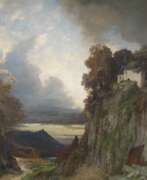

Albert Flamm was a German artist of the Düsseldorf school. He studied architecture at the Dusseldorf Academy of Art and in Antwerp. In 1841 he turned to painting and became a pupil of Andreas Achenbach. In 1848 Flamm became one of the founders of the Malkasten artists' association.
Albert Flamm painted mainly Italian landscapes, recognised for their truthfulness of nature, their vivid colours and their virtuosic treatments. He often chose an elevated viewing position to be able to create wide panoramic perspectives in warm, bright sunlight and with finely rendered detail.
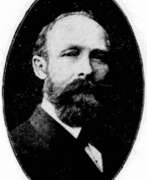

Heinrich Ludwig Frische was a German landscape painter and member of the Malkasten Artists' Association.
Frische painted landscape views of the Harz Mountains, the English coast, Tyrol, and Switzerland.
His sons Arnold Frische and Emil Frische also became painters.


Ismael Gentz, son of painter Wilhelm Gentz, received his training from his father. Gentz traveled with his father to Algiers in the late 1870s, and his portraits from this trip were later featured in Georg Ebers' work. He studied at art academies in Berlin and Düsseldorf, with Peter Janssen as his teacher. Gentz was known for his portraits of contemporaries, which were reproduced lithographically and photomechanically.
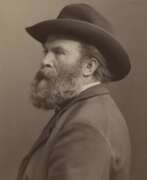

Friedrich Geselschap was a German historical painter who worked in the Classical style. He studied painting at the academies of fine arts in Dresden and Düsseldorf with Karl Ferdinand Sohn, Heinrich Mücke and Friedrich Wilhelm von Schadow.
The Romantic-religious aspects of the Nazarenes had little influence on Gezielschap's artistic development. Rather, it was guided by their neo-classical ideas. It was the ancient models and his fascination with the Italian Renaissance masters, above all Raphael, that made Friedrich Gesellschap a proponent of idealism.


Gustav Gildemeister was a German artist, a representative of the avant-garde movements of the early twentieth century.
He studied art at the Dusseldorf Academy, painted portraits and mainly landscapes in the styles that were actively developing at that time: German Art Nouveau, French Pointillism and late Impressionism. The artist was drafted during World War I and died at the front.
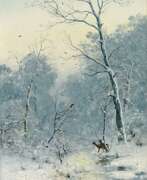

Emil Heinrich Gogarten, sometimes also Henri or Heinrich Gogarten, was a German landscape painter.
Gogarten studied at the Düsseldorf Academy of Art, lived in Paris for several years, and then returned to his homeland. He painted landscapes, preferably winter landscapes, and was talented in conveying the play of the setting sun.
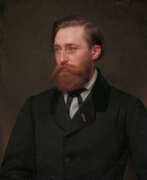

Hans Fredrik Gude was a Norwegian romanticist painter and is considered along with Johan Christian Dahl to be one of Norway's foremost landscape painters. He has been called a mainstay of Norwegian National Romanticism. He is associated with the Düsseldorf school of painting.
Gude's artistic career was not one marked with drastic change and revolution, but was instead a steady progression that slowly reacted to general trends in the artistic world. Gude's early works are of idyllic, sun-drenched Norwegian landscapes which present a romantic, yet still realistic view of his country.


Theodor Groll was a German genre painter, landscape and architectural painter.
Theodor Groll was famous for his beautifully detailed architectural drawings. Besides Oswald Achenbach and Albert Flamm, he belongs to the "Italian painters" of the Düsseldorf School.


Georg Grulich was a German painter.
In Düsseldorf, he documented the reconstruction after the Second World War and the advent of modernism, created monumental cityscapes of the new state capital and is still considered "the" Düsseldorf city painter of the post-war and reconstruction years. His works were shown in exhibitions in Venlo, Maastricht, Oostende, Geneva, Montecatini, Krakow and Moscow. He also participated in the design of the Düsseldorf carnival. In addition, Grulich was a member of the artists' association Malkasten, the Rhenish Secession (1947-1957) and district chairman of the West German Artists' Association (1957-1971).
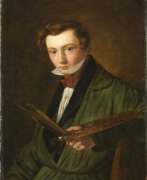

Heinrich Louis Theodor Gurlitt was a German and Danish painter of the second half of the 19th century. He is known as a Romantic landscape painter, a representative of the Hamburg and Düsseldorf schools.
Louis Gurlitt created canvases that are now part of the Royal Danish collection of paintings. Among his famous works are "Landscape near Salzburg", "Monte Pellegrino", "Ieranto Bay with Fishermen" and "Northern Italian Landscape". His works have been exhibited at the auctions "19th Century Painting" and "19th Century European Painting", and the painting "Norwegian Landscape" was sold in 2012 at Sotheby's London for $22,174.
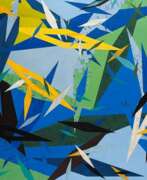

Dieter Haack is a German abstractionist painter.
Dieter Haack studied painting at the Düsseldorf Academy of Fine Arts. His works are characterised by bold colours and energetic compositions.
In addition to his art practice, Haack also worked as a professor of painting and drawing at his alma mater.
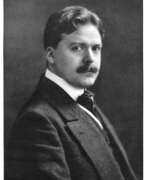

Anton Hackenbroich was a German artist of the twentieth century. He is known as a painter, a representative of the Düsseldorf School of painting, very popular during the National Socialist period in Germany.
Hackenbroich worked in the fields of portraiture, landscapes and still lifes. He was a member of the artists' union "General German Community of Art" and one of the leaders of the artist group "Malkasten". During the National Socialist years, his work was included in numerous exhibitions, including the "Great German Art Exhibition". One of his paintings, "New Youth", was selected by Hitler for an exhibition and used in a manual for members of the "Hitler Youth".
After World War II, Hackenbroich continued to work in Düsseldorf and was popular among affluent art lovers.
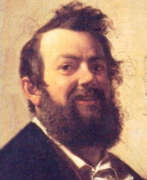

Johann Peter Hasenclever was a German painter of the first half of the 19th century. He is known as a painter, a representative of the Düsseldorf school of art, who is considered one of the founders of German genre painting.
Hasenclever began his work by interpreting biblical, mythological and romantic subjects, but eventually found his calling in humorous scenes from bourgeois life, especially Pyrenean towns and cities. Among his famous works are "The Amusing Examination," "The Reading Room," and "The Trial of Wine," distributed in engravings and lithographs.
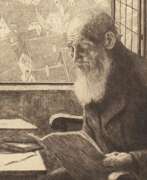

Franz Hecker was a German painter and graphic artist. He studied painting at the Dusseldorf Academy of Art and at the Académie Julian in Paris with William Adolphe Bouguereau.
Many of Franz Hecker's works focused on scenic motifs and Berzenbrück personalities and were inspired by Impressionism . In all, he created more than a thousand works in different techniques. He also painted murals in the conference rooms of the Berzenbrücke town hall. Some of Hecker's early works were considered "degenerate" by the Nazis, and in 1937 they were confiscated and destroyed.
